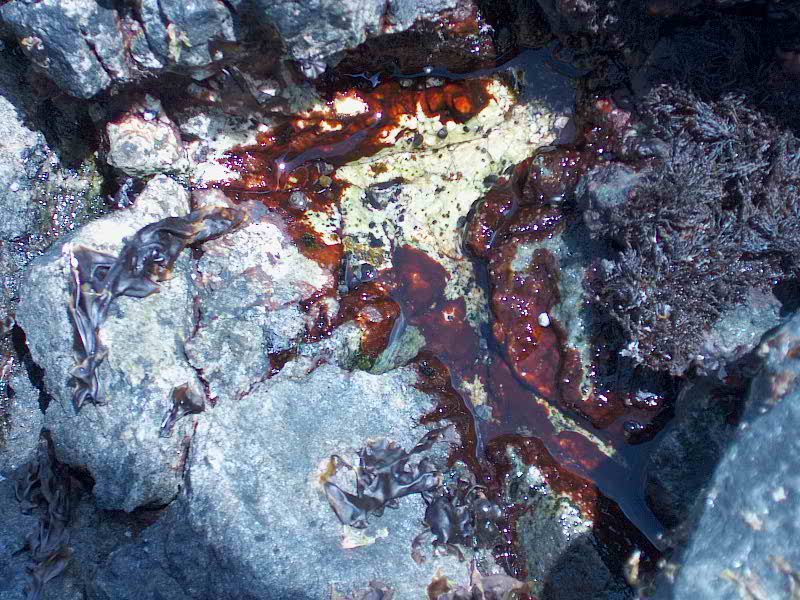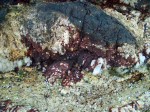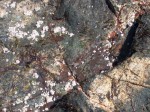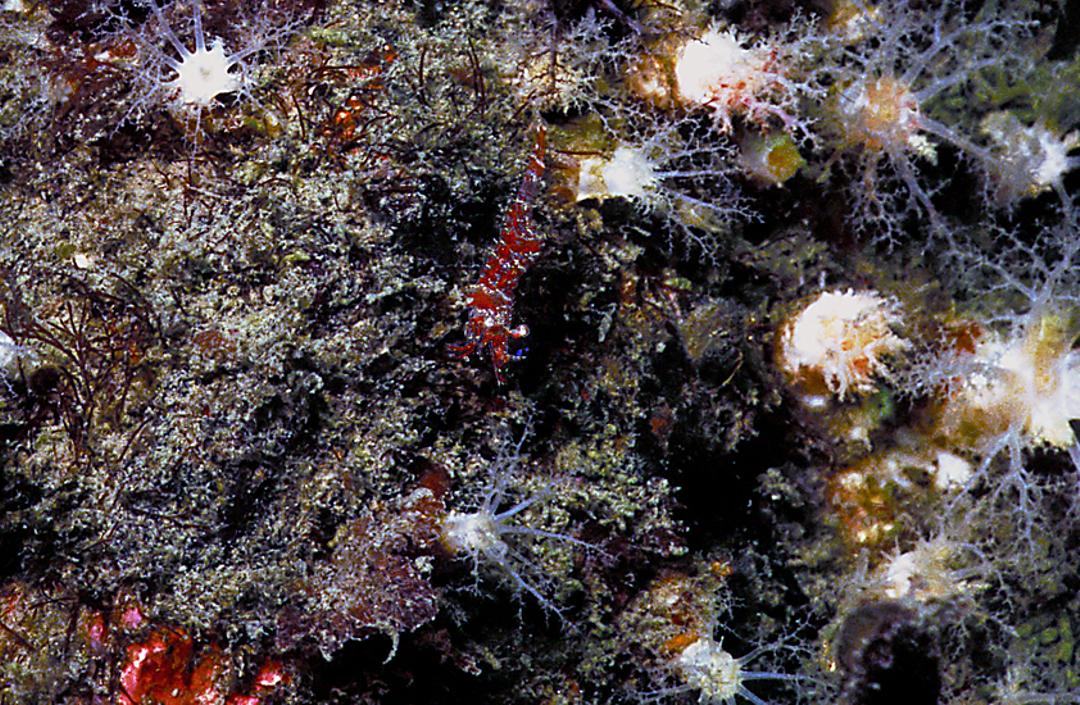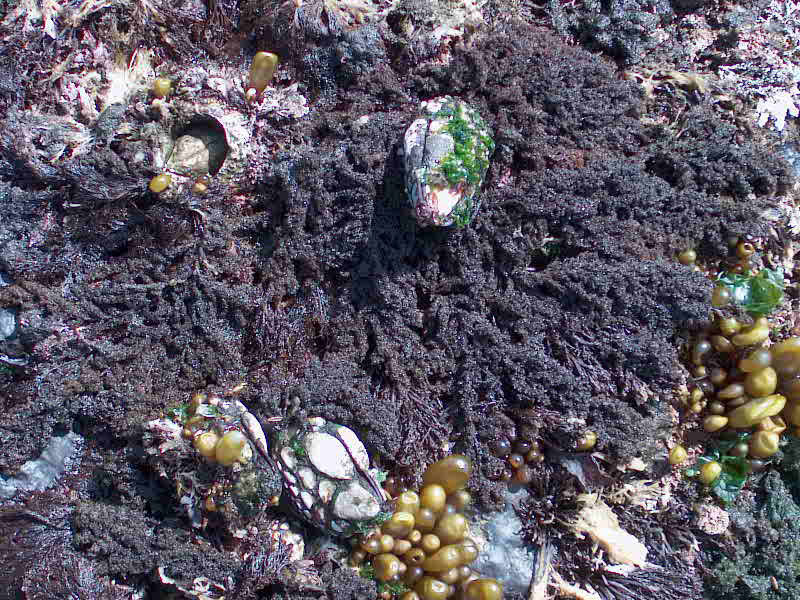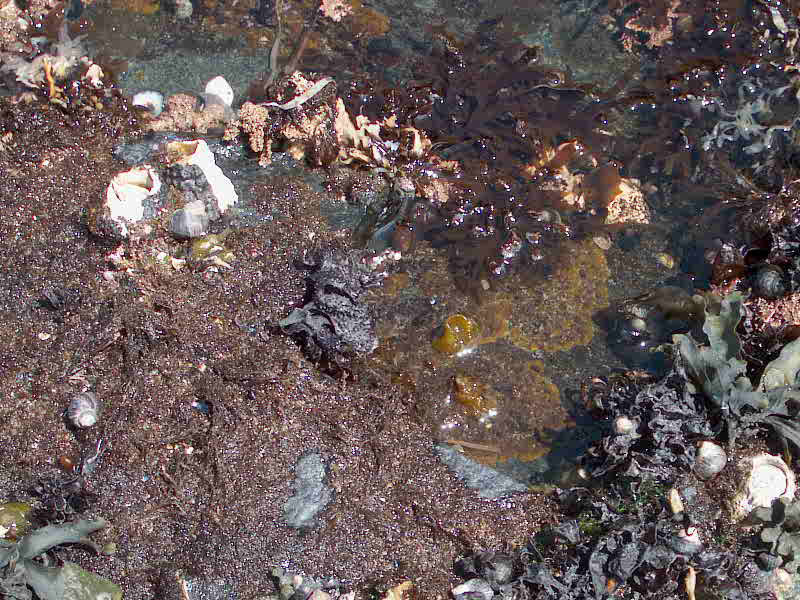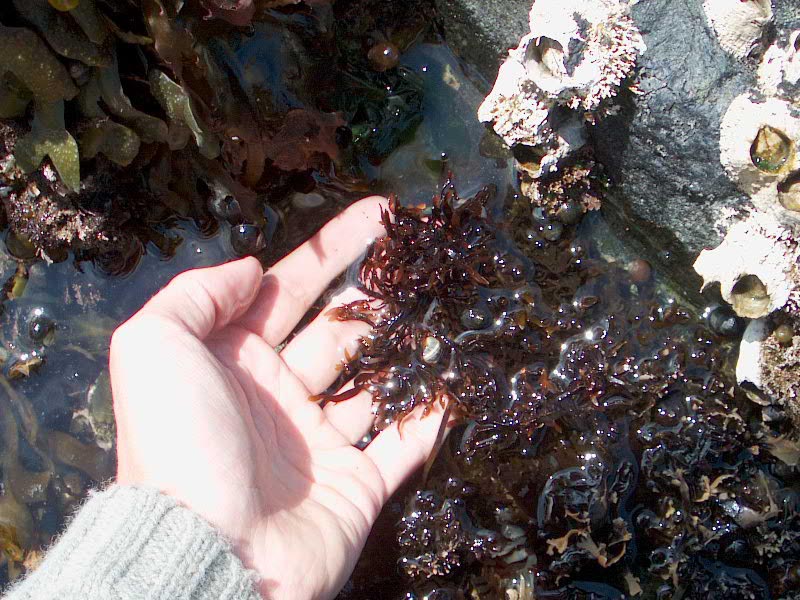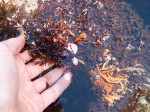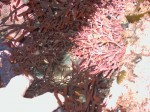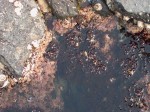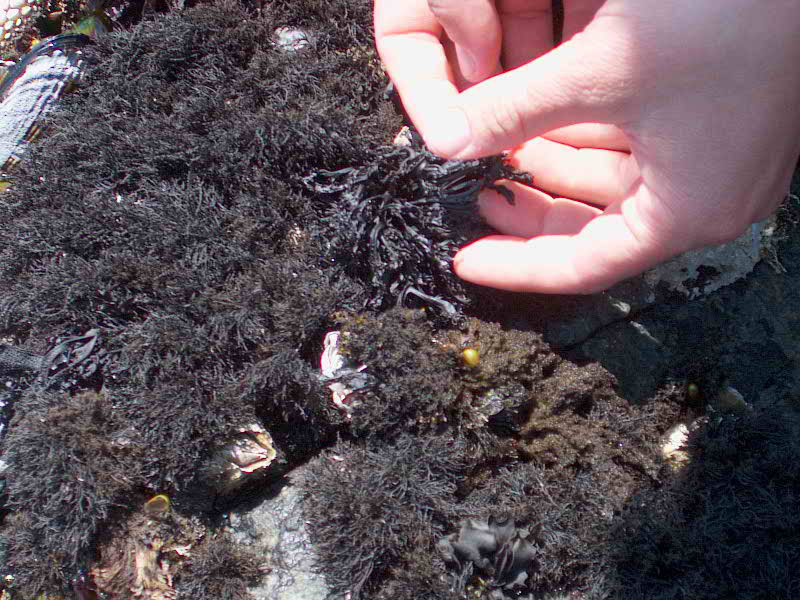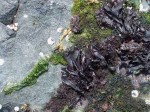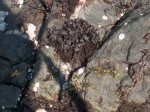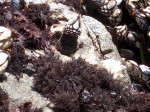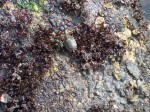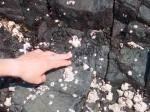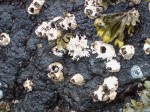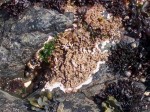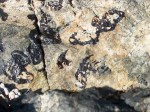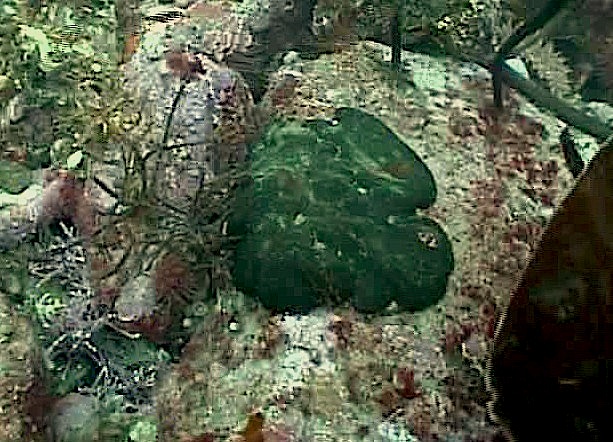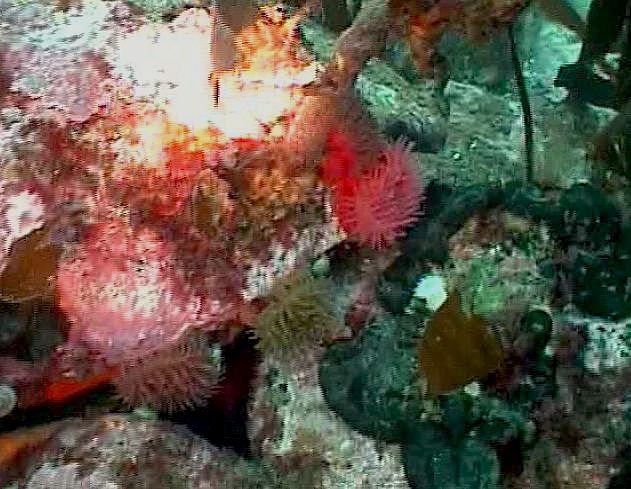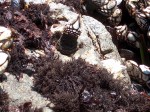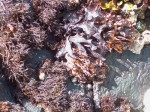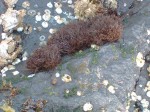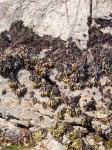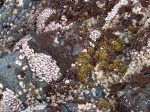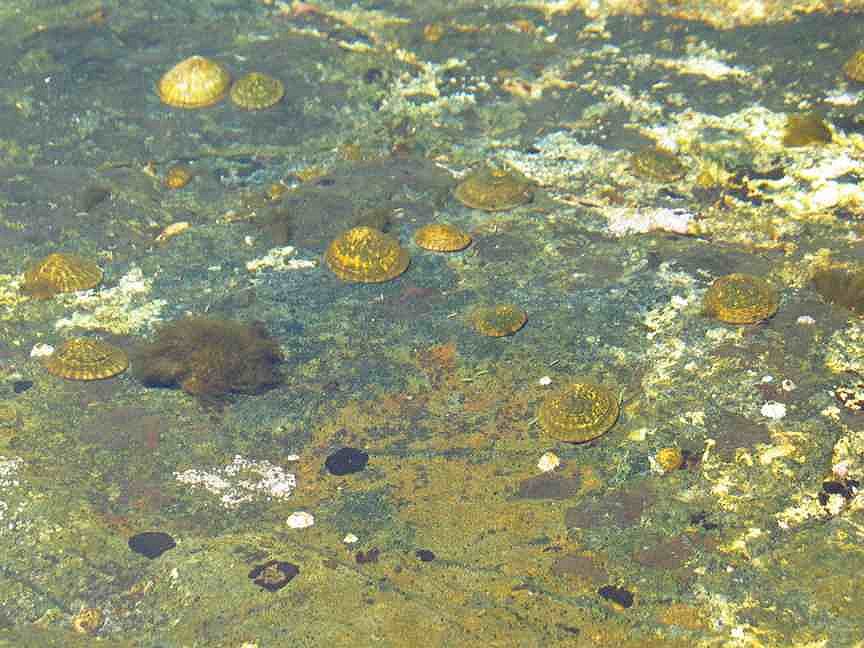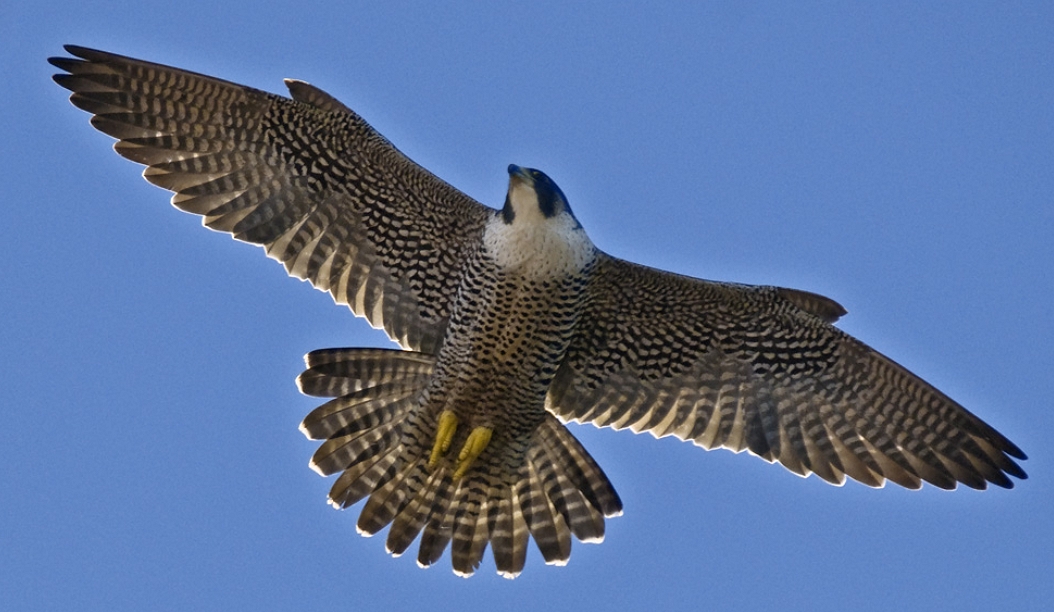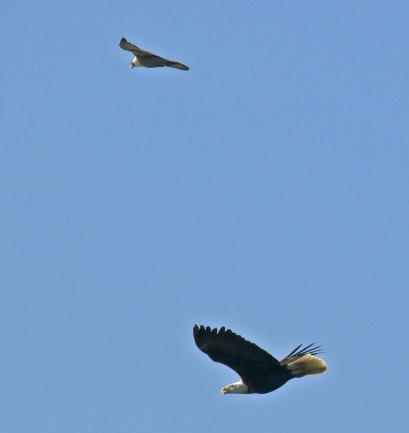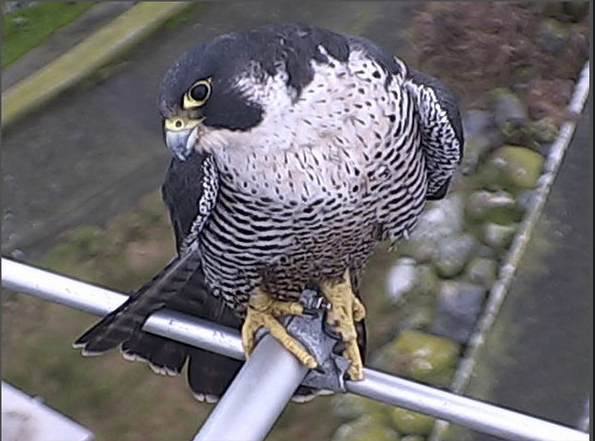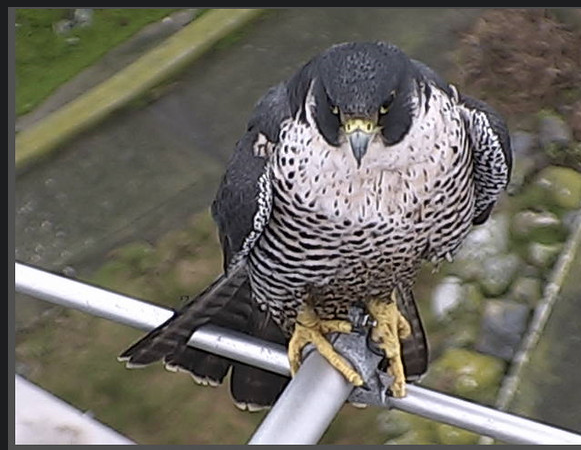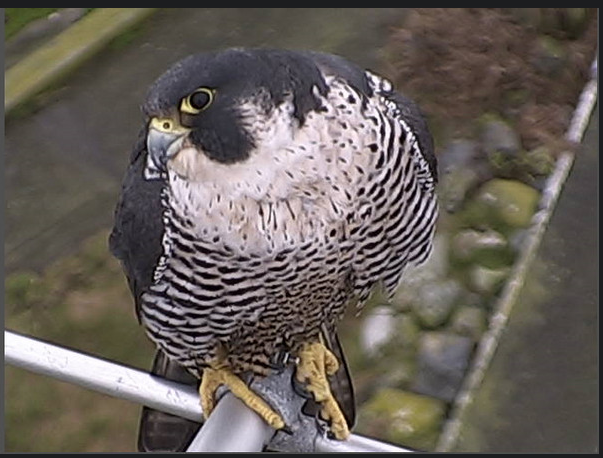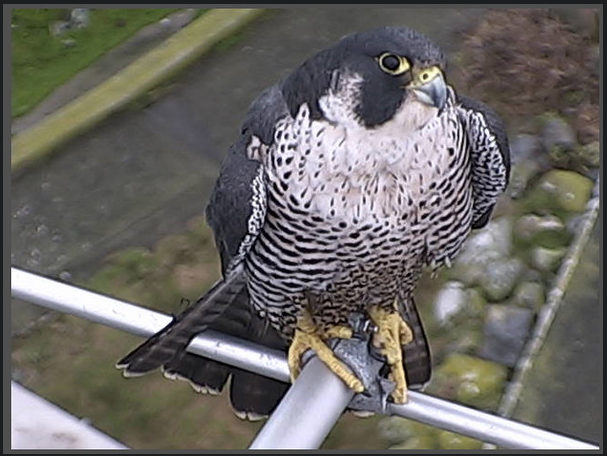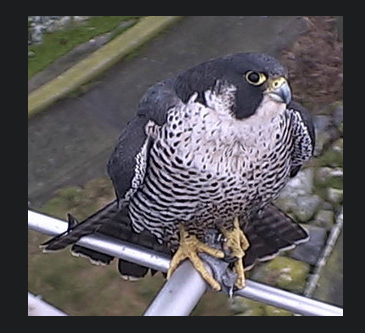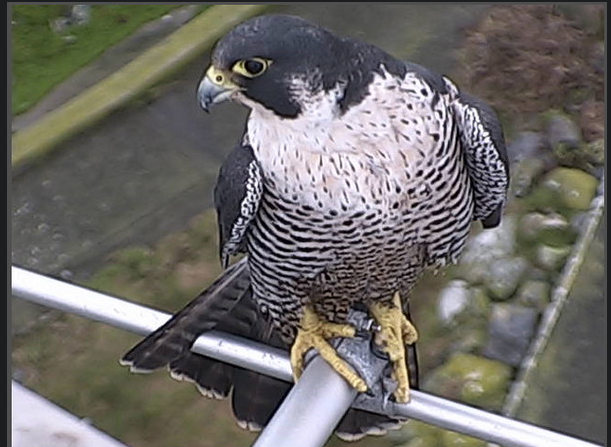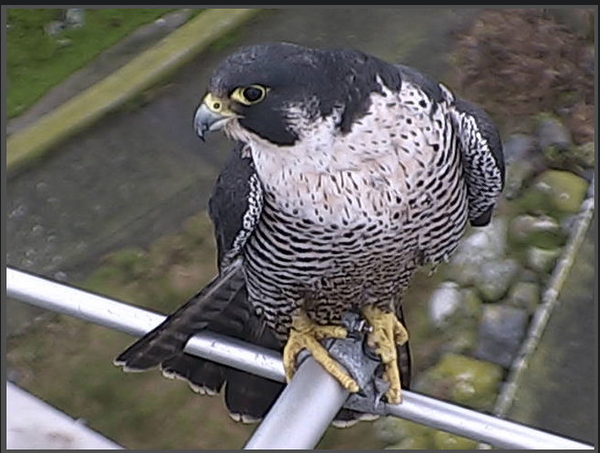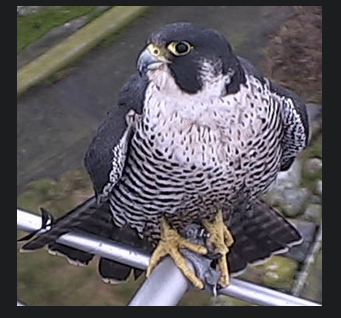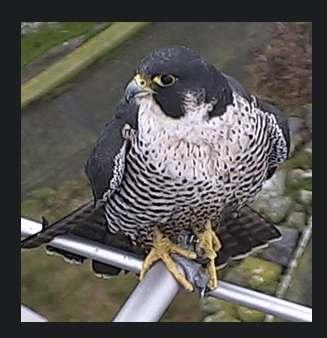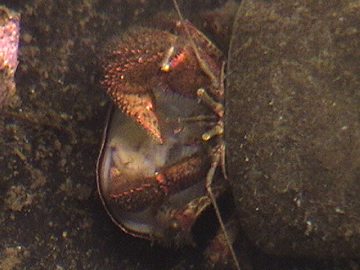
Domain Eukarya
Kingdom Animalia
Phylum Arthroppoda
Class Malacostraca
Order Decapoda
Family Paguridae
Genus Elassochirus
Species tenuimanus
Common Name: Wide-hand hermit crab
In this video, Elassochirus has been disturbed from eating a limpet (Collisella instabilis). It recovers and returns to eating. Note the colouration of the appendages of the hermit crab. Also note that one arm is much wider than the other. The Collisella which normally has a pale shell, is encrusted with the pink algae Lithothamnion.
General Description:
Named as wide-hand, this species hermit crab has a large and flattened right side of chela, carpus and propodus more than its left side. The right cheliped has a wider carpus than it is long. The walking legs have colours of white, reddish brown and purplish-blue on its merus.
Size:
The exterior length is up to 42 mm (1.6 inches).
Natural History, Habitat and geographical and depth range:
Mud, sand, shell bottoms, and especially rocks. The depth range is intertidal (infrequently) to 388 m (1272 feet). For the geographical range, the hermit crab lives in Bering Sea and Aleutian Islands, from Alaska to Washington, and the northwestern Pacific.
Ovigerous females in Washington usually appear from August to May. Larvae produce from March to May and Planktonic are in last months of the year.
Behavior
When the animal retreats inside, the right claw is used to block the access to the shell itself. The crab bents this claw beneath the body while walking.
References:
– Pacific Coast Crab and Shrimps, Gregory C. Jensen; Sea Challengers Monterey, California, 1995.
– Marine Invertebrate of the Pacific Northwest, Eugene N. Kozloff; University of Washington Press, Seattle and London, 1996.
http://people.wwc.edu/staff/cowlda/KeyToSpecies/Arthropoda/Crustacea/Malacostraca/Eumalacostraca/
Eucarida/Decapoda/Anomura/Family_Paguridae/Elassochirus_tenuimanus.html
 The Race Rocks taxonomy is a collaborative venture originally started with the Biology and Environmental Systems students of Lester Pearson College UWC. It now also has contributions added by Faculty, Staff, Volunteers and Observers on the remote control webcams. -Ryan Murphy
The Race Rocks taxonomy is a collaborative venture originally started with the Biology and Environmental Systems students of Lester Pearson College UWC. It now also has contributions added by Faculty, Staff, Volunteers and Observers on the remote control webcams. -Ryan Murphy
